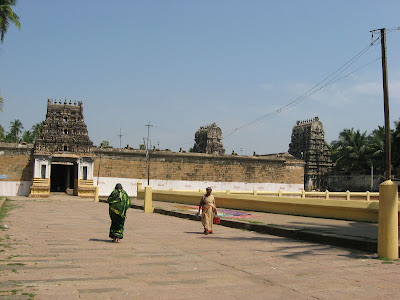In Tamil Nadu as the popular maxim goes, "Wherever there is a mount there is a shrine for lord Muruga".
This Portal dedicated to the devotees of Lord Muruga across the globe. Lord Muruga - called by various favourite names like Karthilkeya, Arumuga, Shanmuga, Guhan, Skanda, Subramanya and Kumara - by his ardent devotees - is a Hindu god. He is considered to be the son of Lord Shiva - the Hindu God of distruction and the brother of Lord Ganesh - the most famous elephant headed god of India.
The portal provides vital information on temples of Muruga - across the globe, with special emphasis on the arupadai veedu group of shrines. It includes specific details like location, legends, purana, mythology, places to stay, festivals, links to other websites etc. on these six most famous temples of Lord Muruga - called Aru padai veedu.

This Portal dedicated to the devotees of Lord Muruga across the globe. Lord Muruga - called by various favourite names like Karthilkeya, Arumuga, Shanmuga, Guhan, Skanda, Subramanya and Kumara - by his ardent devotees - is a Hindu god. He is considered to be the son of Lord Shiva - the Hindu God of distruction and the brother of Lord Ganesh - the most famous elephant headed god of India.
The portal provides vital information on temples of Muruga - across the globe, with special emphasis on the arupadai veedu group of shrines. It includes specific details like location, legends, purana, mythology, places to stay, festivals, links to other websites etc. on these six most famous temples of Lord Muruga - called Aru padai veedu.
Lord Muruga Aaru Padai Veedu(Six Battle Filed)
 Thiruparamkundram : Soora Samharam, Chariot Festival and Laksha archana (worship to Lord Muruga by hundred thousand names)
Thiruparamkundram : Soora Samharam, Chariot Festival and Laksha archana (worship to Lord Muruga by hundred thousand names)
 Thiruchendur : Swing Festival (Oonjal Sevai - where Lord Muruga swings with his consort in a highly tranquill atmosphere)
Thiruchendur : Swing Festival (Oonjal Sevai - where Lord Muruga swings with his consort in a highly tranquill atmosphere)
 Palani : The Golden Chariot Festival (A very famous occation in which golden image of the Lord goes around the temple in Gold Plated Chariot)
Palani : The Golden Chariot Festival (A very famous occation in which golden image of the Lord goes around the temple in Gold Plated Chariot)
 Swamimalai : The Soora Vahana Festival (Lord Muruga is seated above the Asura Soorapadhman and is taken around the temple)
Swamimalai : The Soora Vahana Festival (Lord Muruga is seated above the Asura Soorapadhman and is taken around the temple)
 Thiruthani : Mirror Festival (Kannadi Sevai - where the Lord's Six faces are exposed through a mirror and worshipped)
Thiruthani : Mirror Festival (Kannadi Sevai - where the Lord's Six faces are exposed through a mirror and worshipped)
 Pazhamudhircholai : Bathing Festival (Abhishekam - where the Lord's image is bathed in several holy waters, amidst the veda chanting - Sri Rudhram and Chamakam)
Pazhamudhircholai : Bathing Festival (Abhishekam - where the Lord's image is bathed in several holy waters, amidst the veda chanting - Sri Rudhram and Chamakam)





